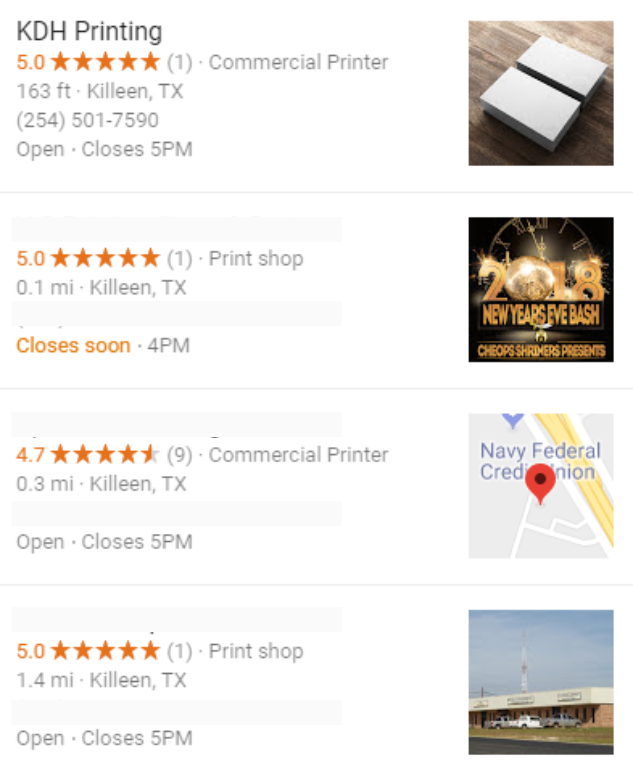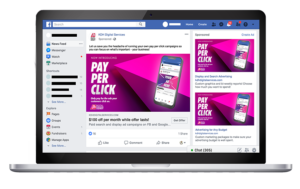Social Media
No matter if you own a multi-billion dollar company or a small, local mom and pop business, your business might still get a bad review every now and then. That’s why we wanted to share how to deal beat bad online reviews to help your business thrive in today’s cruel world. Nowadays it seems as if everyone including your grandparents uses some type of social media platform out there. This makes it a great opportunity for businesses everywhere to create a positive image for themselves with a few words and clicks. In this article, the KDH Digital Services team will show you what you can do to encourage consumers to write positive reviews, how to beat negative online reviews and more.Why Do Online Reviews Exist & Why Are They Important?
Online reviews exist to help searchers determine whether or not a product or service is right for them. In short, review forums are meant to show potential clients how likely they are to enjoy a product or service. As for why online reviews are important, online reviews can help others find the best products and services in the market. They can also help buyers gather plenty of intel on quality, customer service, and prices. In 2017, 93% of customers said online reviews impacted their purchasing decisions.The Best Online Review Platforms
 There are hundreds and thousands of online review platforms around the world, but which ones are the best to worry about? Here’s a quick list and description of the top platforms to list your business:
There are hundreds and thousands of online review platforms around the world, but which ones are the best to worry about? Here’s a quick list and description of the top platforms to list your business:
- Google My Business
- Map Features
- Answering Important Business Questions
- Product Information
- Business Posts
- Images
Yelp
Another popular review site that has grown much over the last 10 years. Yelp serves as a business directory that allows business users to order food and gain traction. Here are some key features to look for on Yelp’s Platform:- Request a Quote
- Bookmark Collections
- Yelp Reservations
- Cash Back
- Ordering Food
- Answering Important Business Questions
- Product Information
- Business Posts
- Images & Video
- Creating Events
- Recommendations
How To Beat Bad Online Reviews
 The only bad side of having a business account on social media is the possibility of receiving negative feedback. But don’t fear, negative feedback allows you to grow as long as you take it the right way.
The only bad side of having a business account on social media is the possibility of receiving negative feedback. But don’t fear, negative feedback allows you to grow as long as you take it the right way.
Paying Close Attention To Customer Reviews
Before even thinking about responding to any review, you must examine every individual review from a neutral perspective. That means setting aside your reality and evaluating the review honestly.Learning From Customer Reviews
Negative reviews can sometimes be a clear indication of issues that need to be addressed within your business structure. Although some complaints may be quick fixes, be on the lookout for recurring complaints. You wouldn’t want to lose business because of the same thing. There are hundreds of people around the Central Texas area that check out 3rd party reviews before making a final decision.Respond To Negative Reviews The Right Way
The best way to respond to an upsetting review is by acknowledging the customer and addressing what you are doing to fix the problem. Ignoring a review can upset the customer even further and generate a feeling of neglect and carelessness. Instead, try responding as soon as possible with the best response possible. Here’s an example of a proper response to a negative review: “Hey Bill, sorry for the inconvenience. We are now offering booster seats for children for the next time you visit!” Make sure to keep every response polite, otherwise, you’ll receive more backlash in the future. This also shows others who visit the review site that your company actually fixes problems instead of masking them.Ask For Feedback
Asking an upset customer what you can do to fix the problem is a great way to let the customer feel heard. Of course, always make sure that you limit what suggestions you pay attention to (there are occasional complaints that don’t matter as much as others).Final Thoughts
Online reputation will forever be important in this lifetime. In most cases, more great reviews mean more business. If you need help managing your online reviews, contact us today for a free quote. Our digital experts are ready to put the best small business practices for you. How have you tried to increase the number of your online reviews? Which review site do you trust most? Which review sites work the best for you? Have you ever received an online review that changed your business structure? We want to know your thoughts on the matter!
0

 Introducing a fairly new product to an uninformed audience could be tough at first. It’s difficult to get results from an audience who might not even be interested in your products or services, to begin with. So, how can you work around this? Although it’s easier said than done, the best way to approach ad campaigns is by targeting the audience who already follows you or has shown previous interest. If you’re new to the online scene, try putting some time and effort into a branding campaign before starting a
Introducing a fairly new product to an uninformed audience could be tough at first. It’s difficult to get results from an audience who might not even be interested in your products or services, to begin with. So, how can you work around this? Although it’s easier said than done, the best way to approach ad campaigns is by targeting the audience who already follows you or has shown previous interest. If you’re new to the online scene, try putting some time and effort into a branding campaign before starting a  Many Pay Per Click Campaigns fail because owners or administrators are spending too little time on managing their campaign. Instead of checking in on your campaign once a month, try updating it once or twice a week. You’ll be able to leave out underperforming keywords and optimize your campaign as it goes.
Many Pay Per Click Campaigns fail because owners or administrators are spending too little time on managing their campaign. Instead of checking in on your campaign once a month, try updating it once or twice a week. You’ll be able to leave out underperforming keywords and optimize your campaign as it goes.
 Don’t forget to give your followers a reason to visit your website! Doing so enables you to share specific information about your company that Facebook, Twitter, and Instagram can’t do for you. Here are some quick tips that’ll help you reach your social media goals:
Don’t forget to give your followers a reason to visit your website! Doing so enables you to share specific information about your company that Facebook, Twitter, and Instagram can’t do for you. Here are some quick tips that’ll help you reach your social media goals:
 Effective customer service is destined to lead to an increase in revenue, customer satisfaction, and retention. This is because it’s easier for people to ask questions on social media than to go through a long process of contacting a business and being put on hold. Quick and effective responses are a great way of separating your business from the rest of the competition.
Effective customer service is destined to lead to an increase in revenue, customer satisfaction, and retention. This is because it’s easier for people to ask questions on social media than to go through a long process of contacting a business and being put on hold. Quick and effective responses are a great way of separating your business from the rest of the competition.
 We can never stress this one enough.
We can never stress this one enough.  Here’s a picture of a KDH Digital Services ad campaign on Facebook:
Here’s a picture of a KDH Digital Services ad campaign on Facebook:
 Once your online advertisement is clicked on, search engines and social media platforms recollect a small fee in return. What usually happens is that search engines and SMPs find the best bidders and showcase them at the top of the ad search results. But be careful, you wouldn’t want to spend more than what you make per click. If done correctly, search engines reward advertisers with relevant and intelligently
Once your online advertisement is clicked on, search engines and social media platforms recollect a small fee in return. What usually happens is that search engines and SMPs find the best bidders and showcase them at the top of the ad search results. But be careful, you wouldn’t want to spend more than what you make per click. If done correctly, search engines reward advertisers with relevant and intelligently